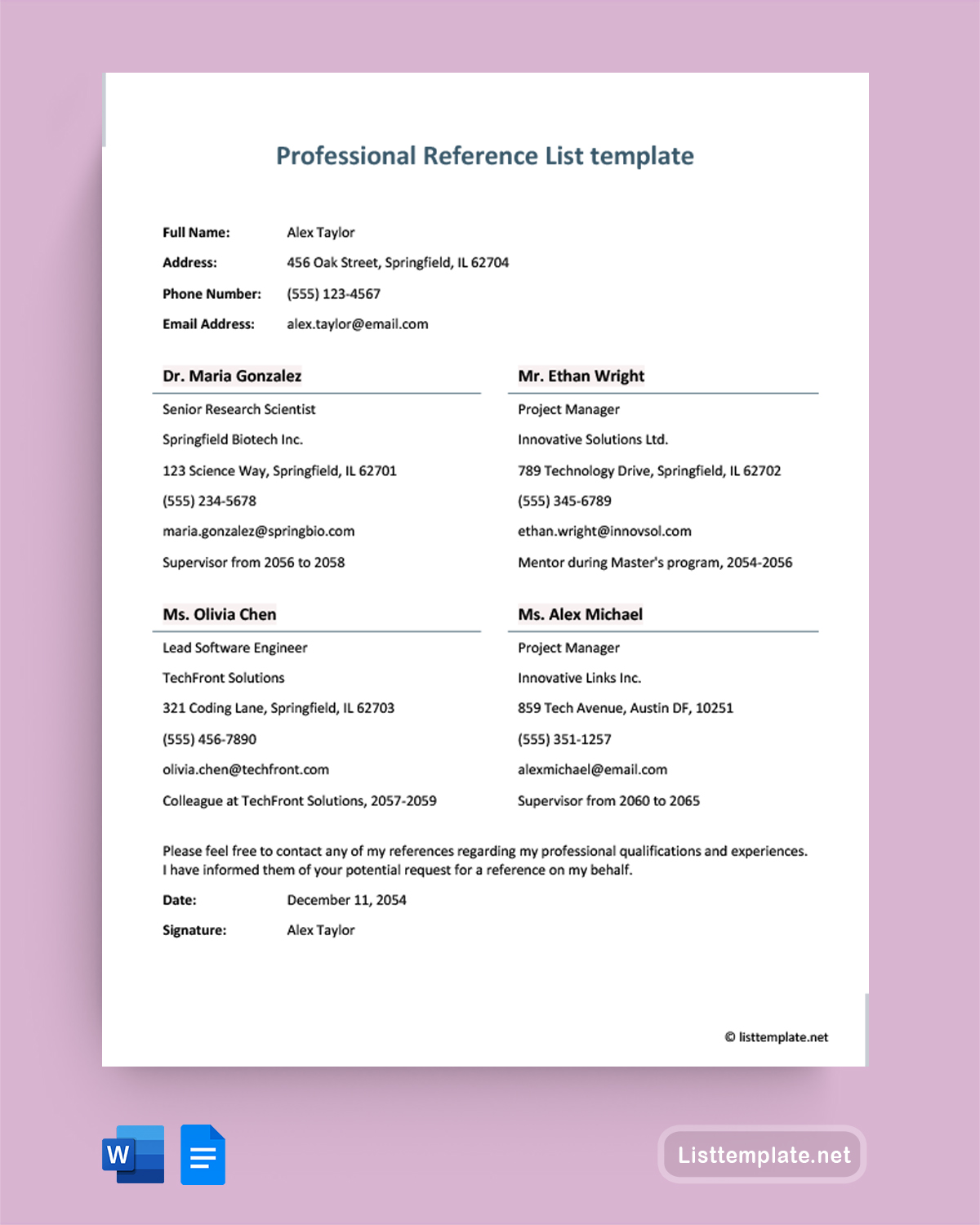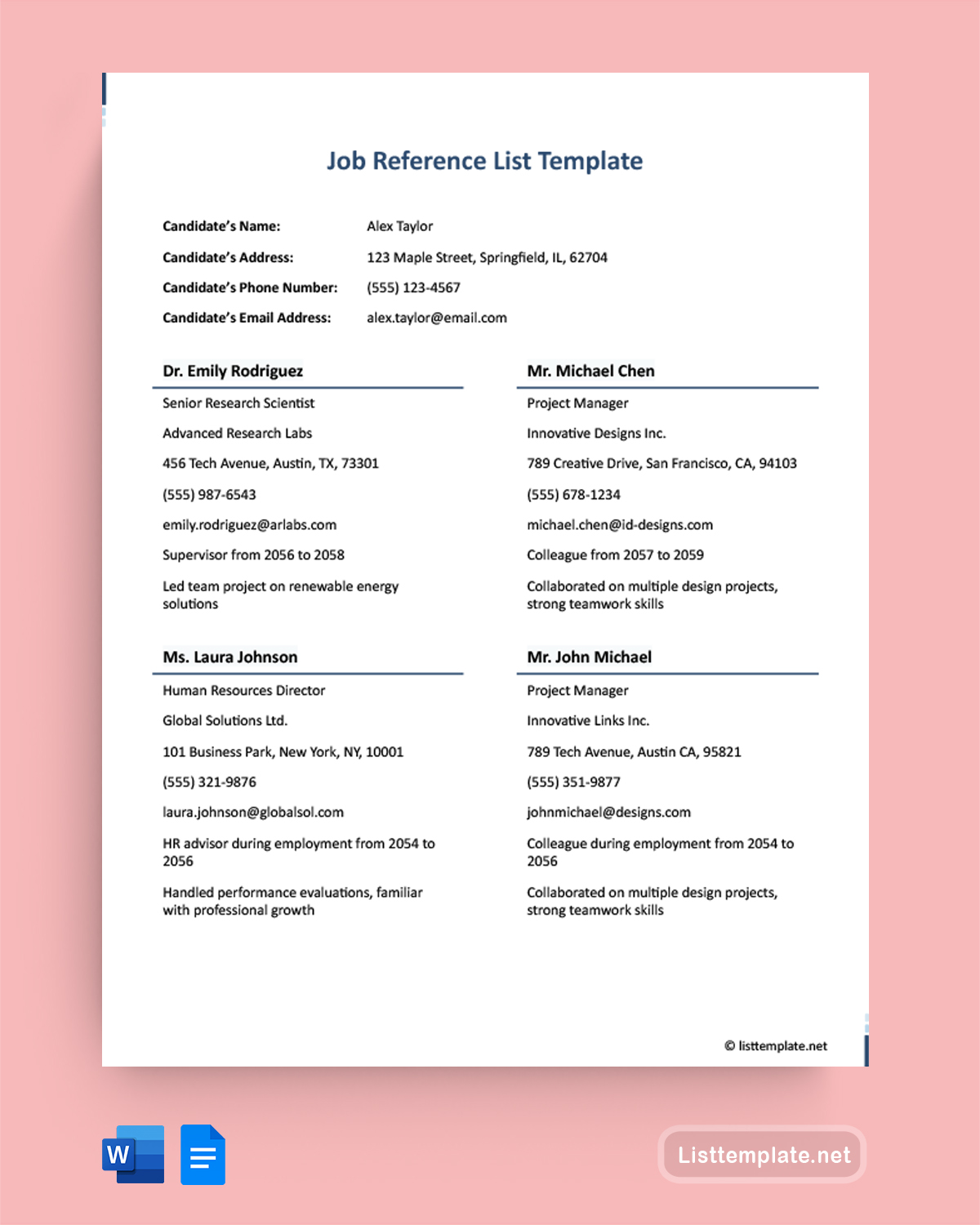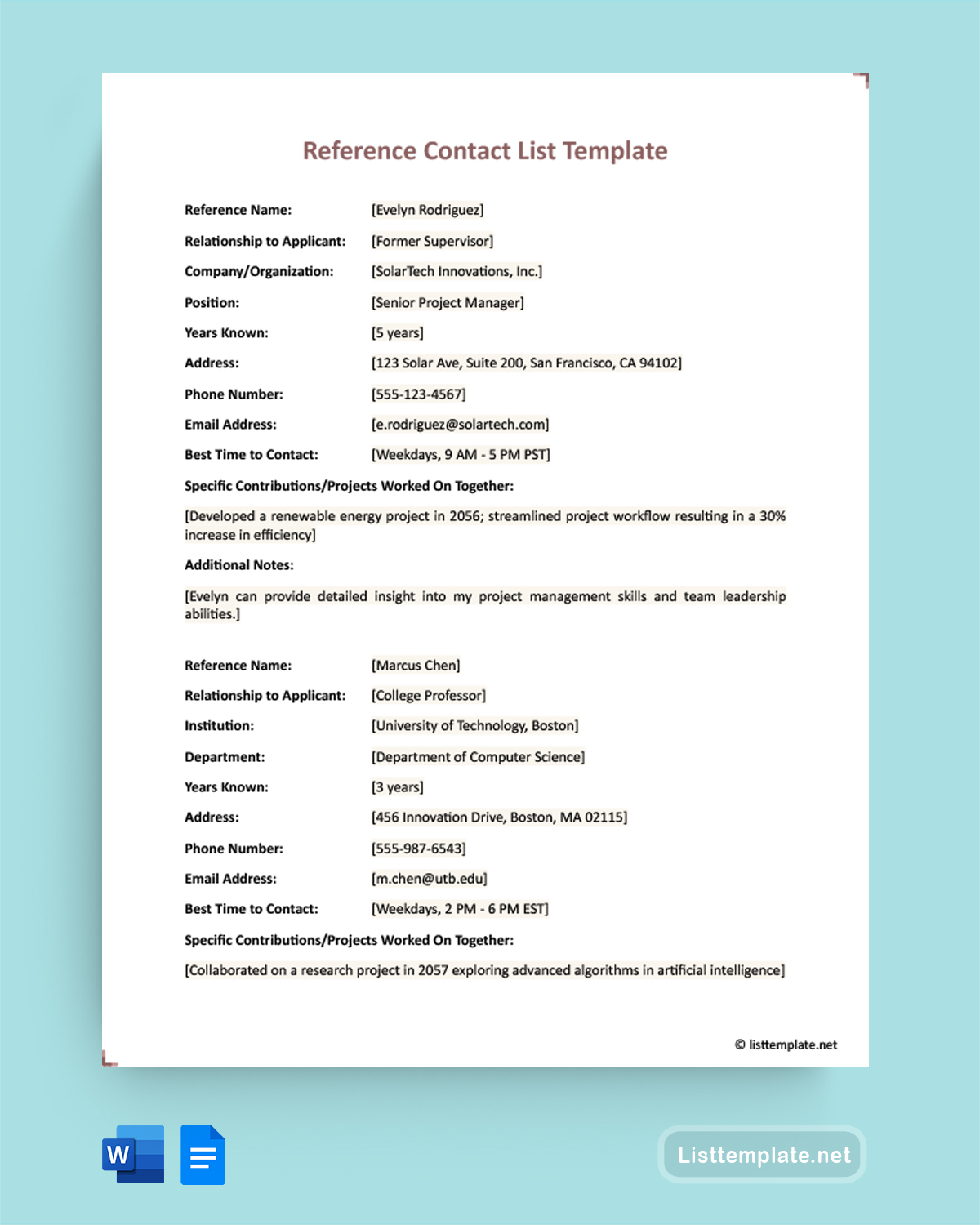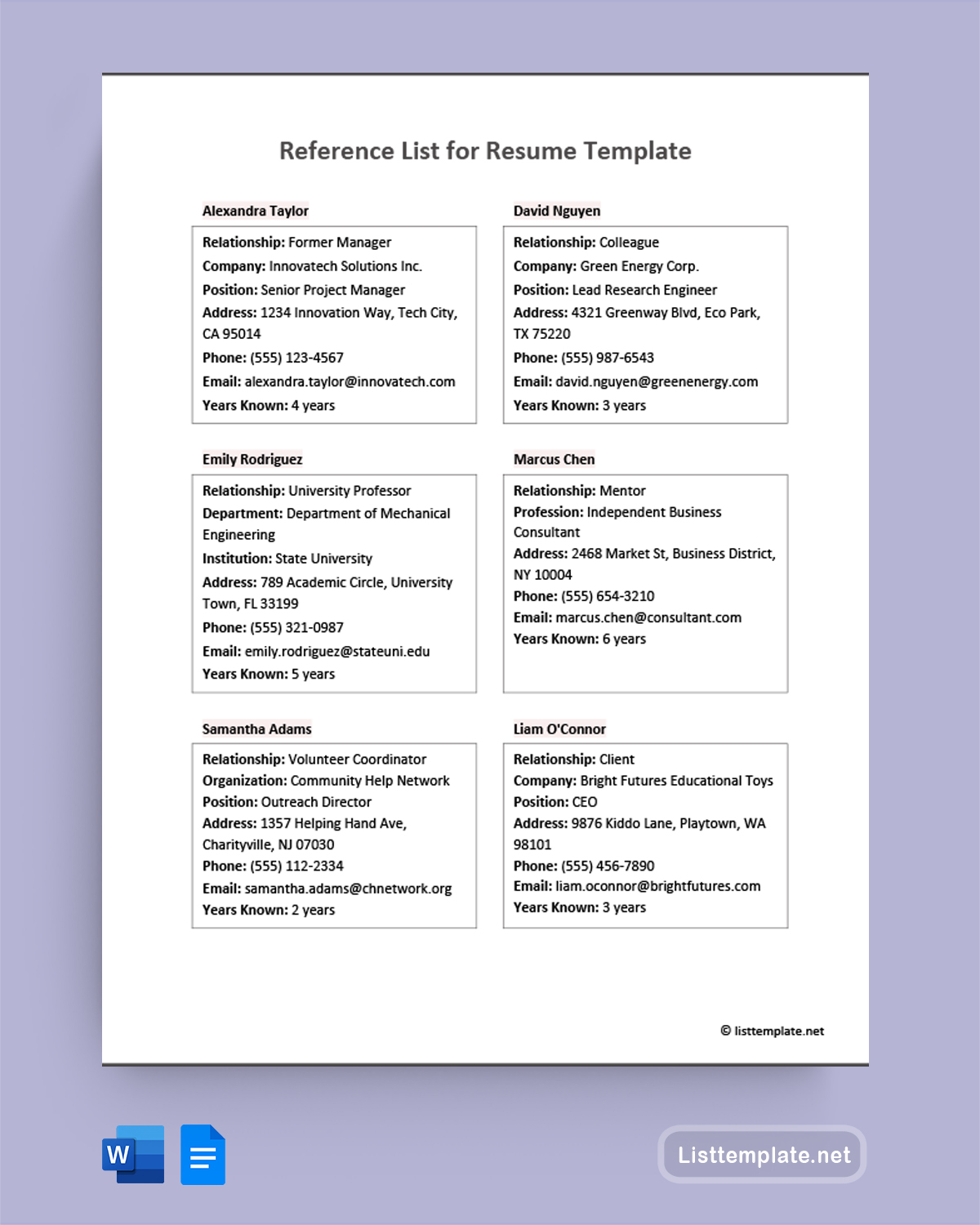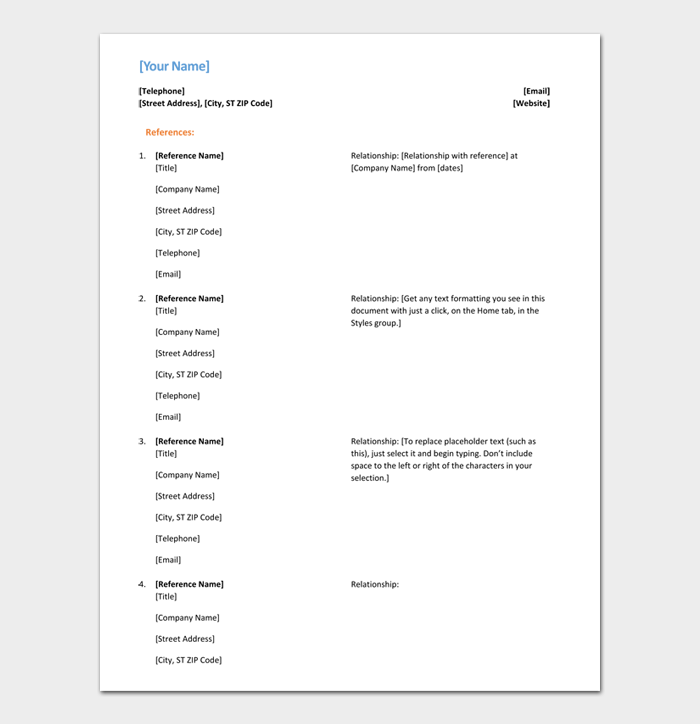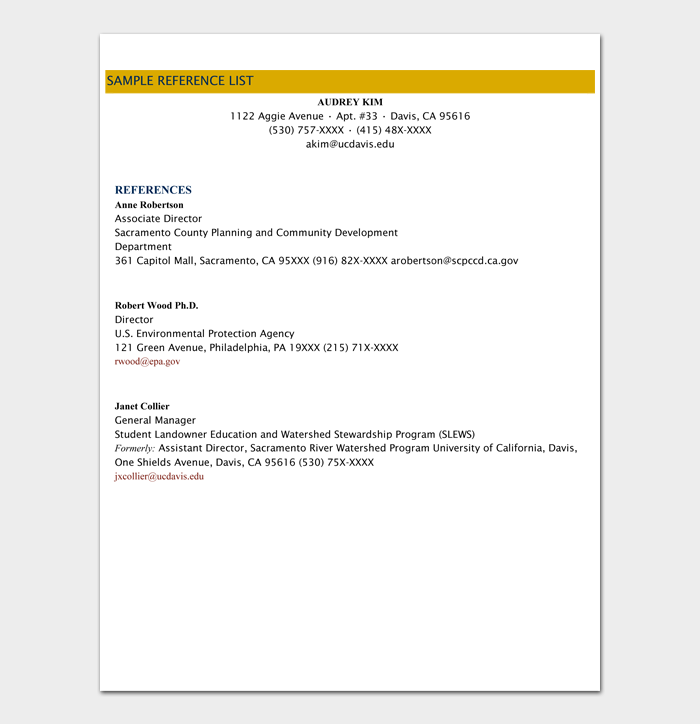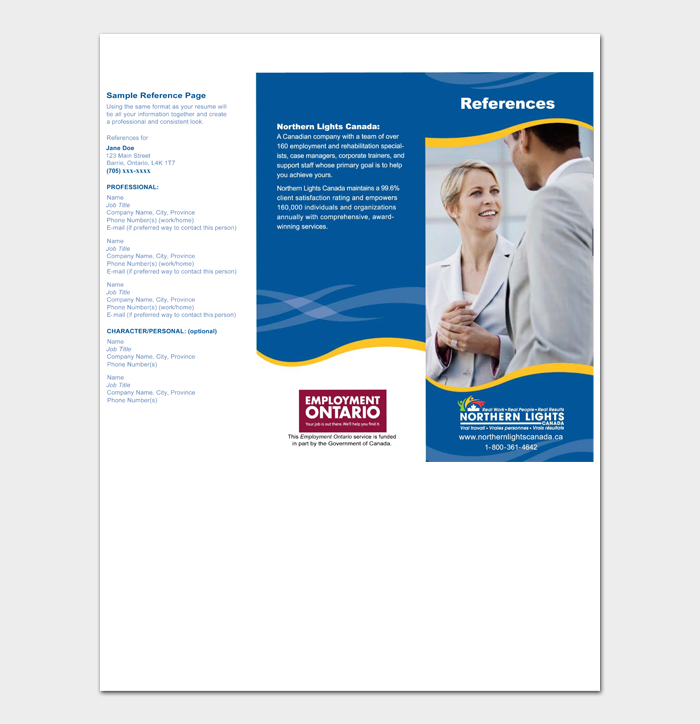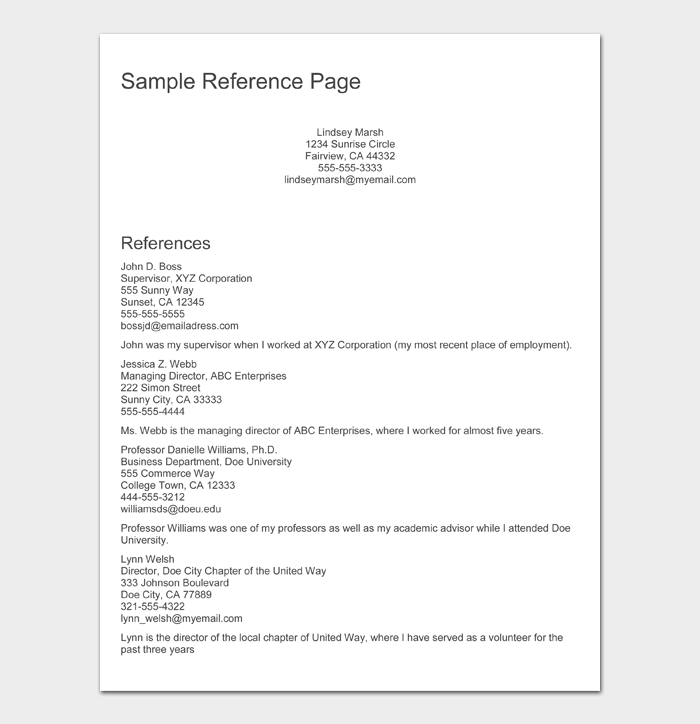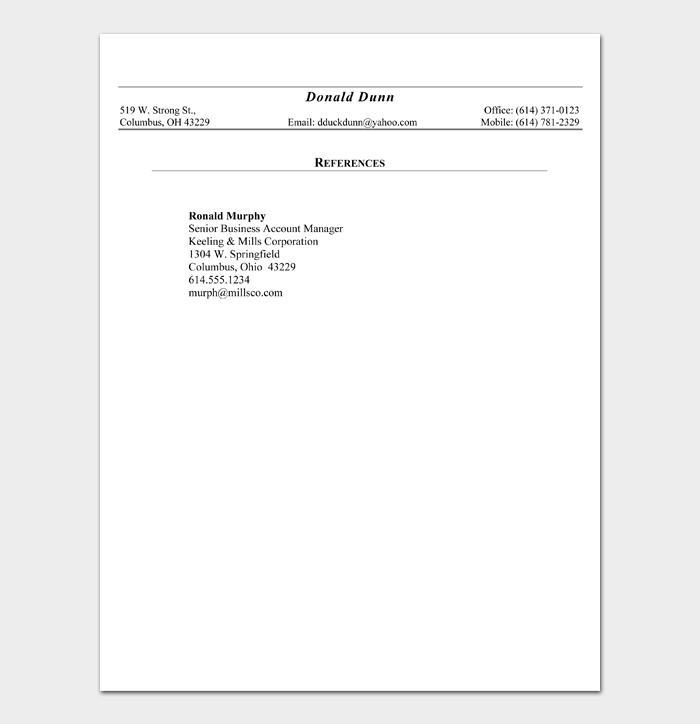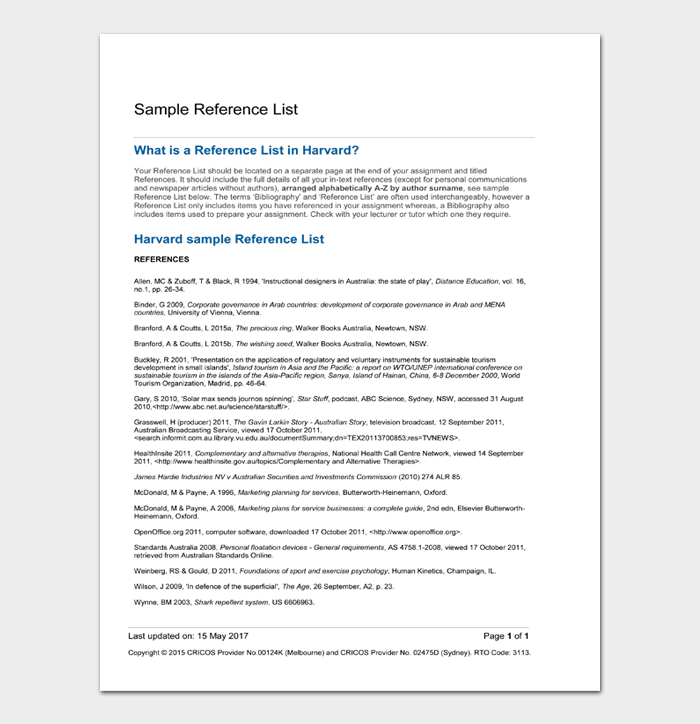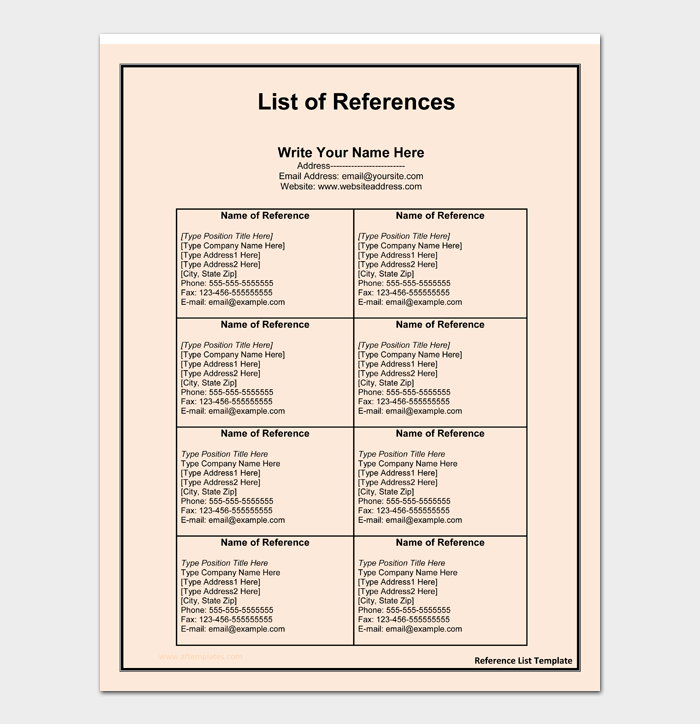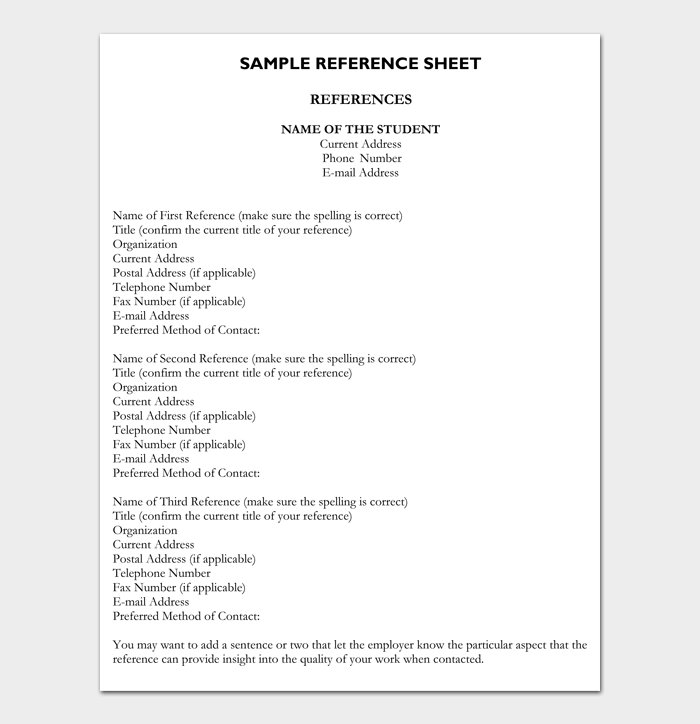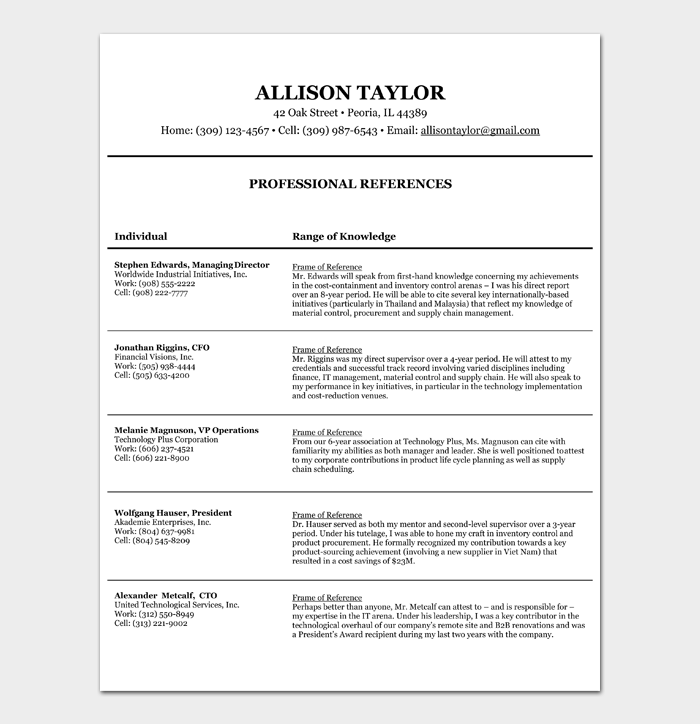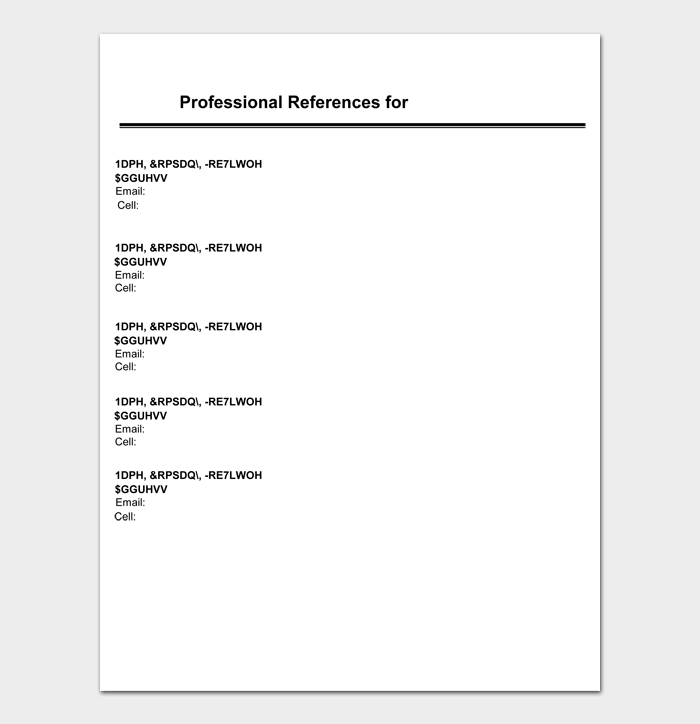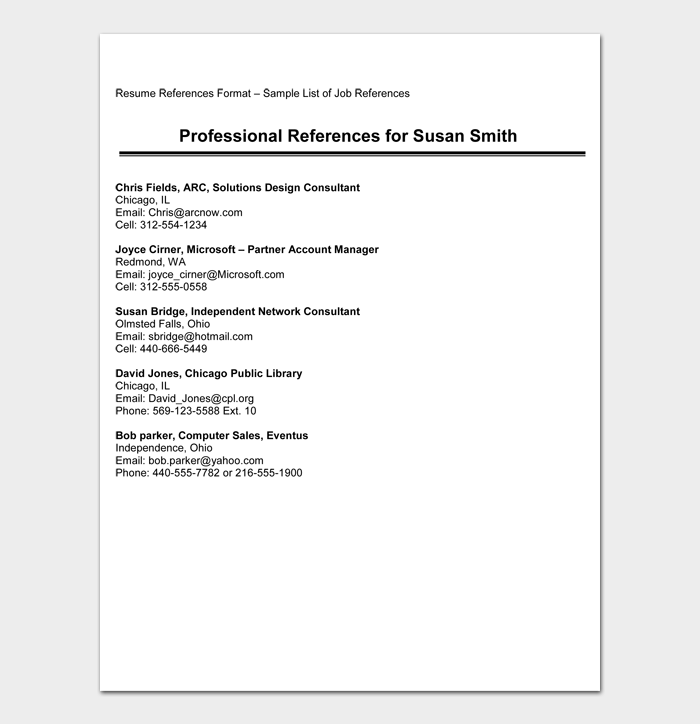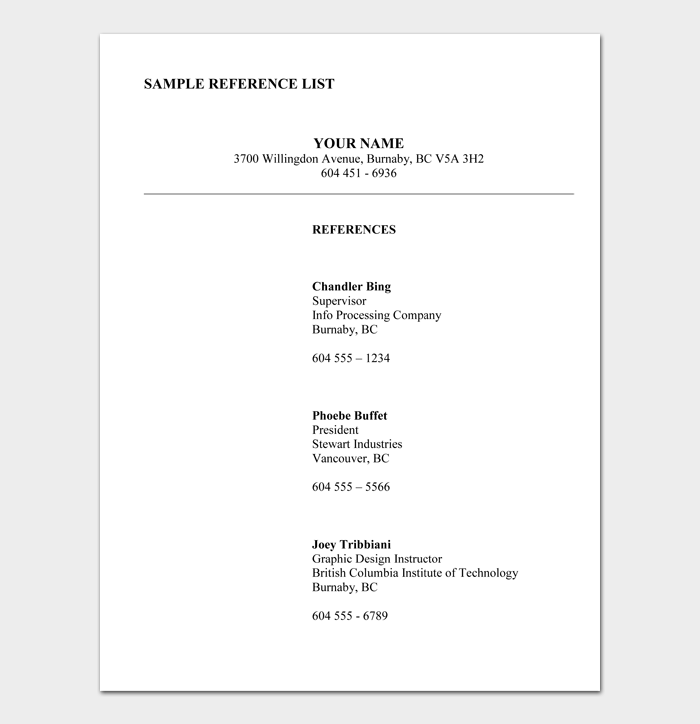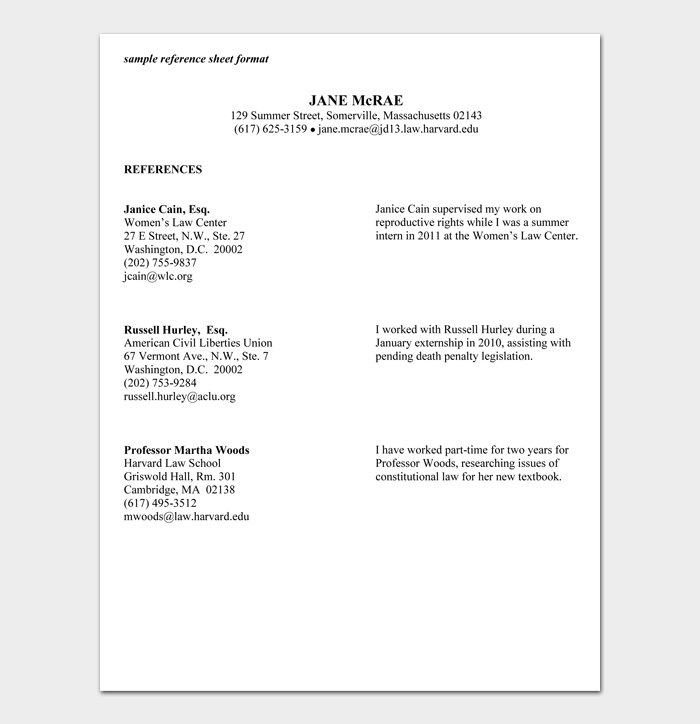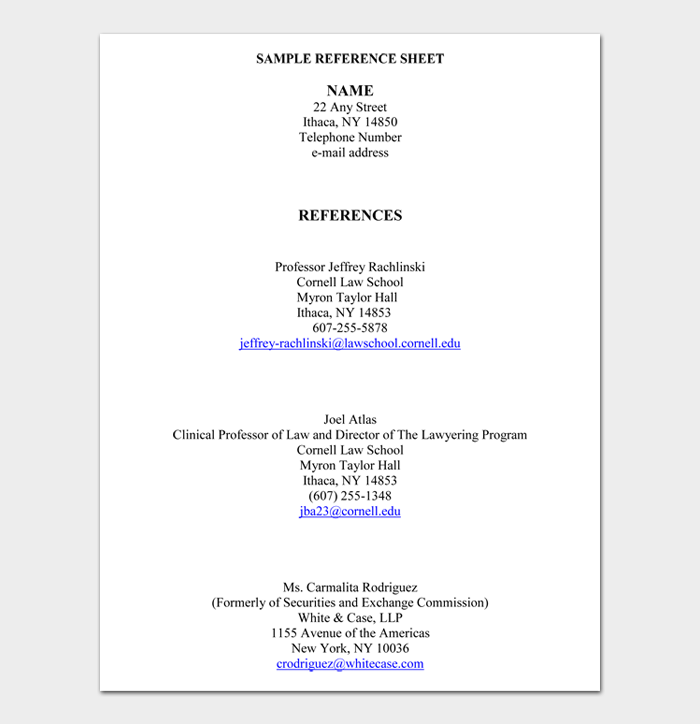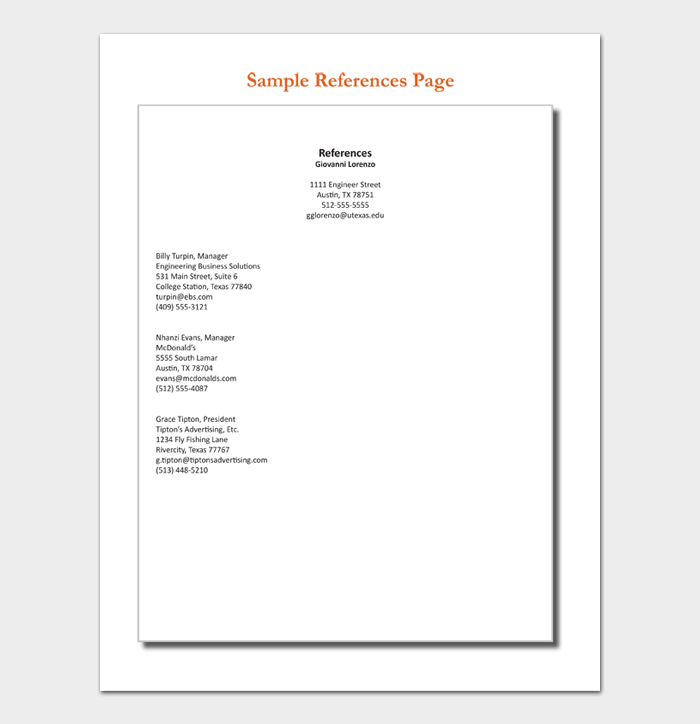Preparing a reference list is a critical step when applying for jobs, as most employers require this as part of the application process. This list is more than just a formality; it provides employers with contacts who can vouch for your qualifications and suitability for the role. It’s important to remember that creating a reference list follows a formal structure and should be approached with care and professionalism, as it is a crucial part of your job application documents. Always carry an updated reference list with you during your job search, and present it to hiring managers upon request. Additionally, ensure you have permission from your references to use their details and inform them that they may be contacted about your application. A well-crafted reference list template helps ensure that your document is thorough and professional, making it easier for readers to verify the sources and references you have included in your work.
Reference List Templates & Examples
What is a Reference List?
A reference list is an integral part of your academic or professional documents. In academic writing, such as research papers or essays, it appears as the final page, listing all the sources you have cited. This ensures that your work is supported by credible information and allows readers to verify your sources. In a professional context, a reference list is a compilation of contacts from your previous employment. These individuals can provide testimonials about your work ethic, skills, and experience. Hiring managers often request this list during job applications, along with your cover letter and resume, to validate your professional background.
What Is a Reference List Template?
A reference list template serves as a structured guide for organizing your sources in a consistent and easy-to-follow format. Whether for academic or professional use, a well-designed template includes specific sections for comprehensive details, such as:
- The reference’s full name
- Their professional relationship to you (e.g., supervisor, colleague)
- The company or institution they are affiliated with, including their department
- Their current job title
- Contact information, including phone number and email address
- Optional comments or notes about your professional interaction or the context of their reference
Using a reference list template is advantageous as it helps streamline the process of compiling and presenting your references. It ensures that all necessary information is included and presented in a standardized format, making it easier for your readers or potential employers to verify your sources or contact your references. This not only saves time but also enhances the professionalism of your application or academic work, leaving a positive impression on those reviewing it.
Types of Reference Lists
Reference lists can vary based on their purpose and the type of information they provide. Understanding different types of reference lists can help you choose the most appropriate one for your needs. Below are a few common types:
- Academic Reference List Template:
- Purpose: Ideal for students seeking internships or jobs.
- Sources: Typically provided by academic figures like supervisors, tutors, teachers, or professors.
- Content: These references vouch for your academic achievements, problem-solving skills, and personal character.
- Value: They offer credible insights into your academic performance and potential for professional growth.
- Personal References List Template:
- Purpose: Suitable for individuals with limited professional experience.
- Sources: Can include community leaders, good friends, neighbors, and landlords.
- Content: Focuses on soft skills and character traits, such as honesty, compassion, timeliness, and reliability.
- Value: Personal references provide a character assessment, which is especially valuable when professional experience is limited.
- Professional References Template:
- Purpose: Essential for job seekers and professionals.
- Sources: Includes co-workers, managers, and employers, preferably from recent employment.
- Content: Highlights professional skills like communication, teamwork, and reliability.
- Value: Professional references offer insights into your work ethic and accomplishments, critical for potential employers.
- Note: Choose references who have a comprehensive understanding of your skills and achievements. It’s advisable to maintain good relations with these contacts, as their endorsement can be pivotal in your career progression.
Each type of reference list serves a unique purpose and adds value to your profile in different contexts. Whether for academic, personal, or professional use, selecting the right type of reference and ensuring that it is presented in a well-organized template can significantly enhance your application or document’s credibility.
When and Why an Employer Want a List of Your References
Understanding when and why employers ask for references is an essential part of the job application process. Here’s what you need to know:
- Timing of Request: Employers typically ask for references at two key stages. First, during the initial application submission, some companies may request a reference list along with your resume and cover letter. Second, later in the application process, particularly as the hiring manager narrows down the candidate pool and is closer to making a final decision.
- Purpose of References: The main reason employers ask for references is to verify the qualifications and experiences listed on your resume. They use these references to assess your potential for performing well in the role. This includes understanding your work ethic, skills, and how well you might fit into the team.
- Employer Instructions: It’s important to note that employers may have specific requirements for your reference list. They often specify the number of references needed and the type of information required for each, such as contact details.
- Preparing Your Reference List: You should format your reference list professionally, ensuring it is error-free, easy to read, and digest. Depending on the employer’s preference, you might need to include your reference list with your application materials, email it to the hiring manager later in the process, or hand it over during an interview. Always be prepared to adapt to the employer’s instructions regarding how and when to provide your references.
Before You Submit Your Reference List
Prior to submitting your reference list, there are several important steps to ensure its effectiveness and accuracy:
- Obtain Permission: It’s crucial to have consent from each person you plan to include in your reference list. Only list individuals who have explicitly agreed to vouch for you.
- Inform Your References: Once you have their consent, it’s equally important to inform your references about the potential contact they might receive. This step is about preparing them to provide relevant information to prospective employers.
- Communicate Your Job Application Context: Share details about the job you’re applying for with your references. Discuss key points they might need to emphasize when contacted. This is particularly important if they haven’t worked with you recently. Remind them of specific accomplishments and skills that are relevant to the job.
- Update and Review Your List: Before submitting, ensure that your reference list is up-to-date and error-free. Check that all contact information is current and accurate. A well-prepared reference list reflects positively on your professionalism and attention to detail.
These steps not only prepare your references to provide meaningful information about you but also demonstrate your respect for their time and willingness to support your job search. Proper preparation and communication with your references can significantly impact the effectiveness of your reference list as part of your job application.
Tips for Getting and Submitting Reference List
Acquiring and submitting an effective reference list is a key part of the job application process. Here are some guidelines to help you navigate this:
- Determine the Type of Reference Needed: Understand the circumstances under which a personal or character reference is appropriate, as opposed to a professional reference. For instance, if you are switching to a new field or have limited work experience, a personal reference who can speak to your character and potential may be more relevant.
- Carefully Choose Your References: The selection of references is a critical step. Tailor your reference list to the job you’re applying for. Whenever possible, choose references who are related to the industry or company you’re interested in. These individuals should be able to attest to your qualifications for the specific position. Consider including people you’ve worked with recently, as they can provide the most current perspective on your abilities.
- Allow Your References to Decline: When asking someone to be a reference, it’s important to give them an opportunity to decline. While many are willing to help with recommendations, there could be professional policies or personal circumstances that prevent them from assisting at that time. Respecting their decision is crucial.
Additional Tips:
- Update Your References: Make sure your references are aware of your current job search and the types of roles you’re applying for. This helps them provide relevant and specific information about your skills and experiences.
- Format and Review: Ensure your reference list is professionally formatted and error-free. This demonstrates your attention to detail and professionalism.
How Do You Email Your Reference List?
When you’re ready to email your reference list to a potential employer, it’s important to prepare your document correctly to ensure it’s easily identifiable and maintains its intended format. Follow these steps:
- Properly Name Your File: Before sending, name your file clearly. Use a format that includes your name, and the purpose of the document, like ‘JohnDoe_ReferenceList’. This helps the hiring manager easily identify and keep track of your submission among other applicant materials.
- Convert to PDF Format: To preserve the formatting of your document, save it as a PDF. This is important because PDF files maintain their layout and appearance across different devices and software.
- For Word Documents: Open your document, click ‘File’, then choose ‘Save As’, and select PDF as the file format.
- For Google Docs: Open your document, click ‘File’, go to ‘Download’, and select ‘PDF Document (.pdf)’.
- Emailing the Reference List: Attach the PDF file to your email. Ensure that your email is professionally written, with a clear subject line (e.g., ‘Reference List for [Your Name] – [Position Applied For]’). In the body of the email, briefly mention that you are attaching your reference list as requested.
- Tailor to Specific Requirements: Remember, different employers might have varying preferences or requirements for reference lists. Always read the job posting carefully and follow any specific instructions provided by the employer regarding the submission of references.
The Importance of Creating a Reference List Template
A reference list template is not just a formal requirement; it plays several crucial roles in both academic and professional contexts. Below are the key benefits of diligently creating your reference list template:
- Showcases Academic Honesty: Properly referencing sources demonstrates your integrity in academic or professional writing. It acknowledges the work of others, helping you avoid plagiarism. Plagiarism is a serious offense that undermines academic integrity and can devalue your work.
- Adds Credibility to Your Arguments: A document backed by references shows thorough research and thoughtful engagement with various sources. This strengthens your arguments and positions your work as reliable and well-informed.
- Assists Future Research: Reference lists are invaluable tools for researchers. They provide a roadmap to the sources you used, enabling others to follow your research path or build upon your findings.
- Helps Readers Verify and Explore Further: A comprehensive reference list enables readers to verify the information presented and delve deeper into the topics or data you have discussed. It enhances the reader’s ability to engage with and understand your work.
- Reflects the Depth of Your Research: The extent and variety of sources in your reference list reflect the breadth and depth of your research. A diverse and extensive list indicates a rigorous approach to researching and understanding your subject matter.
- Documents Your Research Journey: For readers, your reference list reveals the scope of materials you engaged with during your research. It gives insight into the breadth of your reading and the foundations of your work.
Essential Elements of a Reference Page Template
A well-structured reference page is crucial for lending credibility and clarity to your work, whether it’s an academic paper, professional document, or job application. The following elements are commonly included in a reference page template, applicable across different types of reference lists:
- Author’s Name: Start with the author’s last name, followed by a comma, and then the first name. For multiple authors, separate their names with commas. If there’s no individual author, use the organization’s name. If neither is available, the title of the work can serve as the author’s name.
- Title of the Work: Include the full title of the work. The formatting (italic or plain text) and capitalization can vary based on specific citation styles.
- Publication Date: Place the year of publication in parentheses right after the author’s name. For sources like newspapers and magazines, include the day and month after the year.
- Publisher: Mention the name of the publisher. Depending on the citation style, you may use the full name or an abbreviated version.
- Publication Place: Indicate the city and state (using a 2-letter abbreviation) where the publication occurred. Typically, use the first location listed on the title page.
- Page Numbers: For works from larger sources, like chapters or articles, include the page range. Use numerical forms, not abbreviations.
- Volume and Issue Numbers: Particularly for journal articles, include the volume and issue numbers. Volume numbers should be italicized, and issue numbers placed in parentheses.
- Editor: If the work includes an editor, list them after the title, using the appropriate abbreviation (e.g., ‘Ed.’ or ‘Eds.’) in parentheses.
- Web Address: For online sources, include the full URL. If breaking the address to fit a single line, use a hyphen at a natural break point. Avoid hyperlinking the URL in printed documents.
- Retrieval Date: Especially for web sources, note the date you accessed the information, including the day, month, and year.
These elements form the foundation of a comprehensive and professional reference list, ensuring that all necessary information is presented clearly and consistently. This format can be adapted to suit various types of reference lists, from academic to professional settings.
FAQs
A reference list includes all the sources you have cited directly in your text. These are typically formatted according to specific citation styles, like APA or MLA, and are listed alphabetically by the author’s last name. A bibliography, on the other hand, may include all sources consulted during your research, not just those cited in your text. This can encompass additional readings and resources that informed your work, formatted according to styles like Chicago or Turabian.
In research, a reference list is a comprehensive list of all the sources cited within the paper. It allows readers to locate and verify the sources of information used in the research. This list is crucial for crediting authors and maintaining academic integrity.
In APA style referencing, the primary components are the author’s name, the date of publication, the title of the work, and the source (which could be a book publisher, journal name, or URL for online sources).
A reference page in APA format should start on a new page, with the word “References” centered at the top of the page. The page should not have quotation marks, underlining, or any additional formatting. All entries should be double-spaced, just like the main text of your paper, and should follow the specific guidelines for indentation and ordering as per APA style.
Conclusion
We’ve explored the varied and vital roles that different types of reference lists and templates play in both academic and professional realms. Whether it’s an academic reference list at the end of a research paper, a professional reference list for job applications, or a personal reference list, each serves a distinct and crucial purpose. These lists not only demonstrate your respect for the sources of information and individuals who support your qualifications but also add credibility and depth to your endeavors. Crafting a well-organized reference list, regardless of its type, is an essential skill that reflects your attention to detail, integrity, and appreciation of the contributions of others. It’s a key element in showcasing your research depth, professional networks, and the thoroughness of your work. In essence, a thoughtfully prepared reference list or template is not just an addendum to your document; it’s a vital component that enhances the overall impact and reliability of your work.
